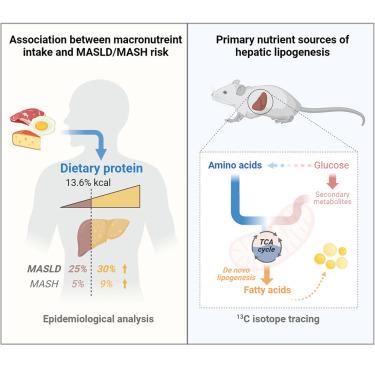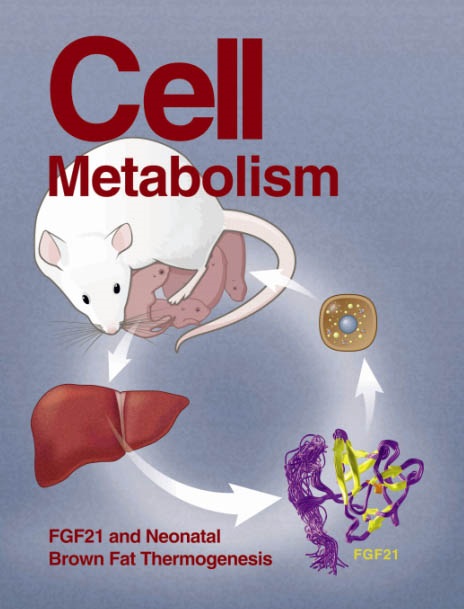Amino acid is a major carbon source for hepatic lipogenesis
IF 27.7
1区 生物学
Q1 CELL BIOLOGY
引用次数: 0
Abstract
Increased de novo lipogenesis is a hallmark of metabolic dysfunction-associated steatotic liver disease (MASLD) in obesity, but the macronutrient carbon source for over half of hepatic fatty acid synthesis remains undetermined. Here, we discover that dietary protein, rather than carbohydrates or fat, is the primary nutritional risk factor for MASLD in humans. Consistently, ex vivo tracing studies identify amino acids as a major carbon supplier for the tricarboxylic acid (TCA) cycle and lipogenesis in isolated mouse hepatocytes. In vivo, dietary amino acids are twice as efficient as glucose in fueling hepatic fatty acid synthesis. The onset of obesity further drives amino acids into fatty acid synthesis through reductive carboxylation, while genetic and chemical interventions that divert amino acid carbon away from lipogenesis alleviate hepatic steatosis. Finally, low-protein diets (LPDs) not only prevent body weight gain in obese mice but also reduce hepatic lipid accumulation and liver damage. Together, this study uncovers the significant role of amino acids in hepatic lipogenesis and suggests a previously unappreciated nutritional intervention target for MASLD.

氨基酸是肝脏脂肪生成的主要碳源
新生脂肪生成增加是肥胖症代谢功能障碍相关脂肪性肝病(MASLD)的标志,但肝脏脂肪酸合成的一半以上的主要营养素碳源仍未确定。在这里,我们发现膳食蛋白质,而不是碳水化合物或脂肪,是导致人类脂肪肝的主要营养风险因素。体内外追踪研究一致认定,氨基酸是离体小鼠肝细胞中三羧酸(TCA)循环和脂肪生成的主要碳源。在体内,膳食氨基酸为肝脏脂肪酸合成提供燃料的效率是葡萄糖的两倍。肥胖症的发生进一步促使氨基酸通过还原羧化作用进入脂肪酸合成,而通过遗传和化学干预将氨基酸碳从脂肪生成中转移出来,可以减轻肝脂肪变性。最后,低蛋白饮食(LPDs)不仅能防止肥胖小鼠体重增加,还能减少肝脏脂质积累和肝损伤。总之,这项研究揭示了氨基酸在肝脏脂肪生成中的重要作用,并提出了一个以前未被重视的针对 MASLD 的营养干预靶点。
本文章由计算机程序翻译,如有差异,请以英文原文为准。
求助全文
约1分钟内获得全文
求助全文
来源期刊

Cell metabolism
生物-内分泌学与代谢
CiteScore
48.60
自引率
1.40%
发文量
173
审稿时长
2.5 months
期刊介绍:
Cell Metabolism is a top research journal established in 2005 that focuses on publishing original and impactful papers in the field of metabolic research.It covers a wide range of topics including diabetes, obesity, cardiovascular biology, aging and stress responses, circadian biology, and many others.
Cell Metabolism aims to contribute to the advancement of metabolic research by providing a platform for the publication and dissemination of high-quality research and thought-provoking articles.
 求助内容:
求助内容: 应助结果提醒方式:
应助结果提醒方式:


